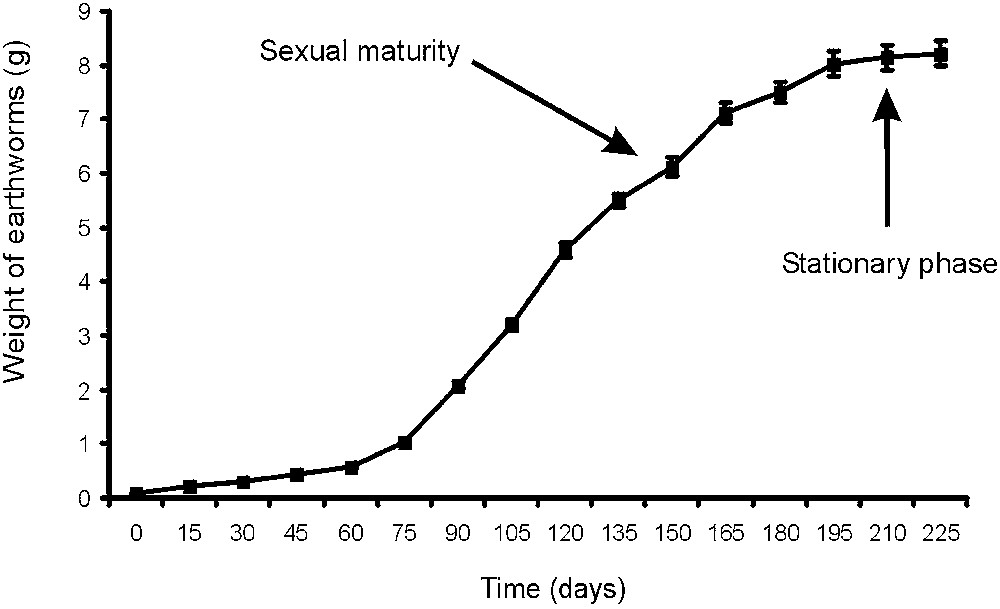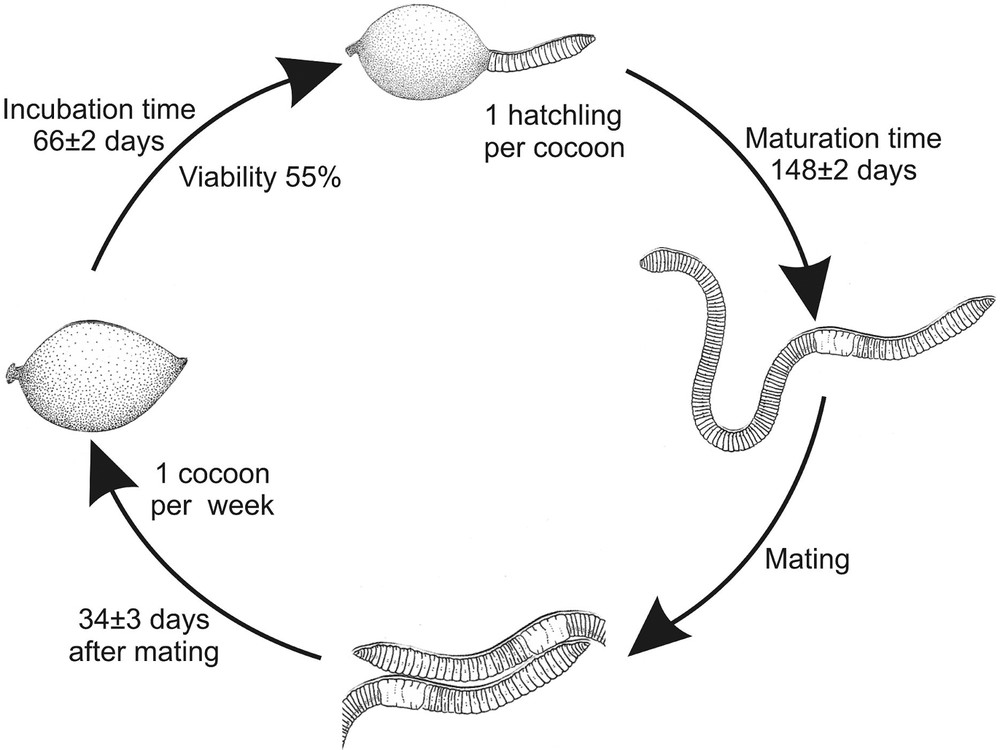1 Introduction
Earthworms account for the main part of the faunal biomass found in soil ecosystems and they act as key species of the decomposition and nutrient cycling processes [1]. However, in spite of their ecological importance and the high number of described species, there is still a lack of knowledge about the general biology and ecology of most earthworms. In the soil system, large-sized earthworm species play an important role in determining the soil structure and composition through their burrowing activity and surface cast deposition, both in natural and cultivated ecosystems [2,3]. Octodrilus complanatus (Dugès, 1828), a large-sized earthworm found often in grasslands and pastures, is a holarctic species of the family Lumbricidae, with a wide distribution area in Europe and North Africa [4]. Large populations of this earthworm species are abundant in maize fields of northwestern Spain (pers. obs.); so the knowledge of both its life cycle and reproductive potential are important in order to evaluate the magnitude of its effects on agroecosystems.
2 Materials and methods
Mature individuals of Octodrilus complanatus were obtained by soil sorting from a maize field in Cesantes (Galicia, Spain) and kept in 1-L plastic containers filled with field-collected soil and fed with cow manure added to the surface. Soil moisture content was maintained at 25% with tap water twice a week. Cocoons were hand-sorted weekly from these initial stocks, measured their weight and size, and then incubated at
3 Results
The growth of O. complanatus followed a sigmoid curve, with a slow initial phase (

Growth of Octodrilus complanatus at 20 ± 2 °C and fed ad libitum with cow manure (means ± SE, n=30). Time to reach sexual maturity and stationary phase of growth are remarked.
Cocoon production started
4 Discussion
In laboratory conditions, O. complanatus showed an unexpectedly high growth rate according to their ecological type, characterized by lower growth rates and maturation time [5–7]. This unexpected growth was probably due to the increased food availability and temperature, since Lee [3] reported an optimal thermal range for European lumbricids between 10–15 °C; these results are supported by lower growth rates in Lumbricus terrestris at 10–15 °C than at 20 °C, as reported by Butt et al. [6]. Apparently, there is a contradiction between the high rates of growth and reproduction that we found at 20 °C in this work and the halt in reproduction that this species experiences during summer. In fact, analysis of mature individuals of O. complanatus obtained from field populations revealed that in summer the ovaries were not well developed; the size of the seminal vesicles was smaller than during the rest of the year, and the spermathecae were empty, showing a reduced diameter [8,9]. These characteristics were the result of the combination of low moisture conditions and high temperatures, which does not occur in laboratory conditions. Therefore, there is need for further research on variation of the life traits of this species in a range of temperatures and moistures, in order to apply our knowledge to field conditions.
The life cycle of O. complanatus, showed in Fig. 2, is more similar to those of other large anecic or endogeic earthworms, like Lumbricus terrestris, L. friendi, and Allolobophora caliginosa (k-selected species) than to the life cycles of epigeic earthworms like Eisenia fetida, E. andrei, Eudrilus eugeniae and Perionyx excavatus, with shorter sizes, fast growth and higher reproductive rates (r-selected species) [10]. Thus, similar growth rates were found by Butt [5] and Butt et al. [6] for L. terrestris (6 g of weight in five months at 20 °C), even though they were higher than the growth rates of Allolobophora longa, Octolasion cyaneum, and Allolobophora carpathica, other deep-burrowing species [5,7]. The rate of cocoon production (52 cocoons per earthworm per year) places O. complanatus together with species like L. terrestris, A. longa, A. carpathica and O. cyaneum (38, 18, 10 and 32 cocoons per earthworm per year, respectively); however, the cocoon incubation time, over 60 days, and hatchability (55%) were slightly lower than those recorded in L. terrestris and O. cyaneum and similar to A. longa's ones [5,7].

Life cycle of Octodrilus complanatus reared in its parent soil and fed ad libitum with cow manure at a temperature of 20 °C.
Acknowledgements
This research was funded by a Spanish CICYT (CGL2006-11928) grant. F. Monroy and M. Aira are currently supported by ‘Isidro Parga Pondal’ fellowships from the Xunta de Galicia (Spain).


